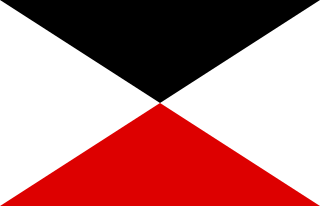
The IV Army Corps / IV AK was a corps level command of the Prussian and then the Imperial German Armies from the 19th Century to World War I.

The III Army Corps / III AK was a corps level command of the Prussian and then the Imperial German Armies from the 19th century to World War I.

The XII Army Corps / XII AK was a Saxon corps level command of the Saxon and German Armies before and during World War I.

The 1st Army was an army level command of the German Army in World War I. It was formed on mobilization in August 1914 from the VIII Army Inspectorate. The army was dissolved on 17 September 1915, but reformed on 19 July 1916 during the Battle of the Somme. It was finally disbanded in 1919 during demobilization after the war.

The 2nd Army was an army level command of the German Army in World War I. It was formed on mobilization in August 1914 from the III Army Inspection. The army was disbanded in 1919 during demobilization after the war.

The 3rd Army was an army level command of the German Army in World War I. It was formed on mobilization in August 1914 seemingly from the II Army Inspectorate. The army was disbanded in 1919 during demobilization after the war.

The 4th Army was an army level command of the German Army in World War I. It was formed on mobilisation in August 1914 from the VI Army Inspection. The army was disbanded in 1919 during demobilization after the war.

The 7th Army was an army level command of the German Army in World War I. It was formed on mobilization in August 1914 from the II Army Inspection. The army was disbanded in 1919 during demobilization after the war.

The 6th Army was an army level command of the German Army in World War I. It was formed on mobilization in August 1914 from the IV Army Inspectorate. The army was disbanded in 1919 during demobilization after the war.

The 11th Army was an army level command of the German Army in World War I. It was formed in March 1915 in Kassel originally to serve on the Western Front but was transported to Galicia for service on the Eastern Front. The army was dissolved on 8 September 1915, but reformed on 23 September 1915 for the Serbian Campaign. It was finally dissolved on 7 January 1919.

The 12th Army was an army level command of the German Army in World War I formed in August 1915 by the redesignation of Armee-Gruppe Gallwitz. It served exclusively on the Eastern Front and was dissolved on 9 October 1916 when its commander, General der Infanterie Max von Fabeck, was transferred to 8th Army.

The 18th Army was an army level command of the German Army in World War I. It was formed against France on 27 December 1917 from the former Heeresgruppe Woyrsch command. It served exclusively on the Western Front and was dissolved on 2 January 1919.

Armee-Abteilung Strantz / Armee-Abteilung C was an army level command of the German Army in World War I. It served on the Western Front throughout its existence.

Armee-Abteilung Gaede / Armee-Abteilung B was an army level command of the German Army in World War I. It served on the Western Front throughout its existence and formed the extreme left wing.

Armee-Abteilung Falkenhausen / Armee-Abteilung A was an army level command of the German Army in World War I. It served on the left (southern) wing of the Western Front throughout its existence.

The Guards Reserve Corps was a corps level command of the German Army in World War I.

The V Reserve Corps was a corps level command of the German Army in World War I.

The XXI Army Corps / XXI AK was a corps level command of the German Army, before and during World War I.

The V Army Corps / V AK was a corps level command of the Prussian and then the Imperial German Armies from the 19th century to World War I.

The 54th Corps was a corps formation of the German Army in World War I. It was formed in September 1916 and was still in existence at the end of the war.


